Archaeological Achievements of Early Metallurgical Sites in the Hexi Corridor Region
Since 2010, the project of “Investigation, Excavation and Research on Early Metallurgical Sites in the Hexi Corridor” had been implemented by the joint team organized by Gansu Provincial Institute of Cultural Relics and Archaeology, Institute of Archaeology, Chinese Academy of Social Sciences (IA CASS) and University of Science and Technology Beijing (USTB). Scholars spent 8 years excavated the Xichengyi site, a prehistoric remains located in Zhangye City in the middle part of the Corridor. By 2017, the excavation area reached 5100 square meters. 929 features, including house foundations, ash pits, burials, ash ditches, walls and burnt-soil surfaces were uncovered, and over 2,000 pieces (sets) of artifacts were unearthed.
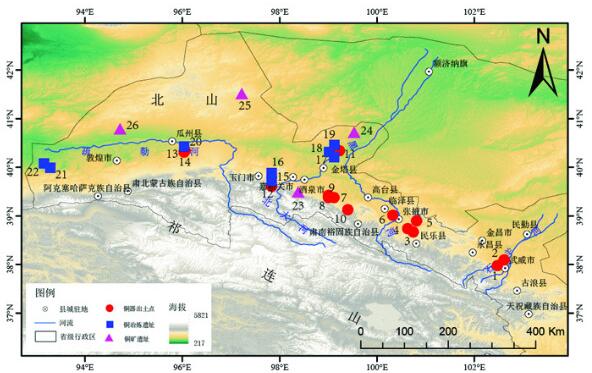
Early Metallurgical Sites in the Hexi Corridor
1. Cultural Periods
It’s initially inferred that the Xichengyi Site was a prehistoric settlement engaged in dry-land farming mainly, stock raising, metallurgy and other handicraft manufacture simultaneously. A sequence of archaeological discovered at Xichengyi delineates a three-phase chronology: Phase I, late Machang Culture with a few remains of Qijia Culture (4100-4000BP); Phase II, Xichengyi Culture coexisting with numerous remains of Qijia Culture (4000-3700BP); and Phase III, Siba Culture with a few of the Qijia Culture (3700-3500BP).
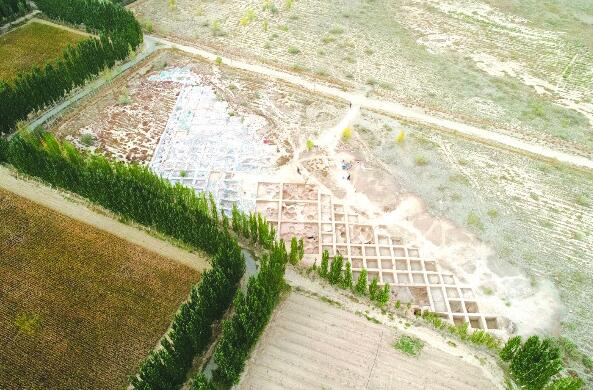
The aerial photo of Xichengyi Site
2. Climate and Environment
According to the carbon dating analysis (mainly 13 kinds of woody plants) from the Xichengyi Site, it was humid with rivers flowing around during the Xichengyi Cultural Period. It was cool weather on the prairies (grasslands) during the Siba Cultural Period. Since 3,700 years ago, this region had had moderate temperatures and moist conditions before but comparatively dryer afterwards. The diluvium layers explored prove that there might have been several flooding events between 3,500 and 4,100 years ago, which would have had a certain amount of influence on the cultural development in this district.
3. The composition of the Settlement
The settlement development could be divided into 3 phases based on the excavations so far. During the late Machang Period as the Phase I, ash pits and houses foundations were the mainly features, and the house foundations are semi-subterranean. Phase II (Xichengyi Culture), there are semi-subterranean, ground-level, and adobe houses, kilns, ash pits, ash ditches, fireplaces, and tombs. Phase III (Siba Culture), there are house foundations, ash pits and burials. Of the houses there are the two types of ground-level and adobe, which inherited the construction techniques and forms of Phase II.. Overall, the houses of the settlement experience a transition from the subterranean-semi-subterranean dwellings to a mixture of semi-subterranean, ground-level, adobe houses, and further to a mixture of ground-level and adobe houses. The adobe constructions in Xichengyi Cultural Period were found to be the earliest in the northwest China. Different from those in east China, the adobe constructions in Hexi Corridor with double technical systems absorbed the Central Asian style and blended with local adobe wall building skills.
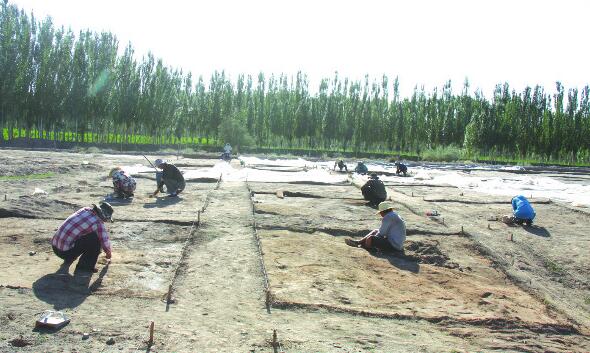
Excavation at Xichengyi Site
4. Means of Livelihood
According to the screening and flotation analyses, the Xichengyi Site represented diverse characteristics in the agricultural development of dry-land farming that involved foxtail millet and broomcorn millet growing. Wheat appeared in the Xichengyi Site about 4,000 years ago, the archaeological evidence suggests that Hexi Corridor possiblely be one of the routes by which wheat may have been brought into China. Agriculture in the Neolithic period was different from that of the Bronze Age throughout Gansu and Qinghai, due to the differences in time and space. And the encounter between China and the West played an essential role in the development of growing millet through dry-land farming to the diversities of agricultural features.
Animal bones were identified as those of livestock, including sheep, pigs, cattle, dogs, and wildlife such as deer, and hares at the Xichengyi Site, without any seashells or fish bones. The ancient people raised sheep for milk and wool rather than meat only. It was very easy to find the medium-sized mammal remains in the site, showing that ancient people had been taking good advantage of these mammals. And the pig remains are evidence of the settlements with animal husbandry of that time. Thus, the possibility of the ancient locals fishing could be well excluded.

Adobe house F81Ⅱ
5. Handicraft
Handicrafts were well developed on Xichengyi Site, with not only the production of potteries, stone artifacts and bone artifacts, but also jade articles making and metallurgy work. It could be inferred from the potteries of Xichengyi Culture and Qijia Culture that there might have been individual ceramic handicrafts in both communities. And potters might have exchanged techniques during the time of Qijia Culture and Xichengyi Culture and that of late Machang Culture and Siba Culture. There might have been some certain jade articles production, such as jade axes, adzes and turquoise beads, without Bi (round flat pieces of jade with a hole in its centre), Cong (long hollow pieces of jade with rectangular sides) or any other sacrificial vessels found. And the raw material of jade may be from Beishan Mountain and Qilianshan Mountain regions mainly.
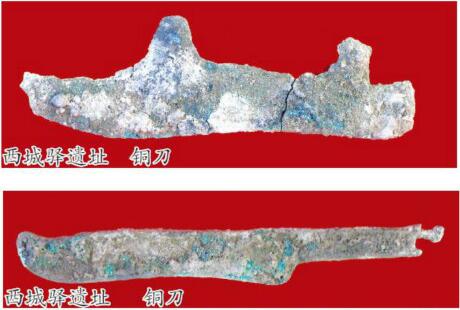
Bronze knife
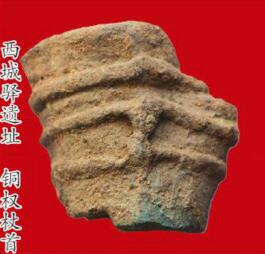
The macehead

Jade axe
Metallurgy was distinguished not only as the handicraft on Xichengyi Site but also as a characteristic cultural phenomenon in the region of Hexi Corridor during the late Neolithic Age and Bronze Age. The beginning of metallurgy in the Hexi Corridor can thus be securely positioned at 4100-4000 BP. It’s difficult to make a distinction between the 2 metallurgical styles, as the sites of Xichengyi Culture and Qijia Culture mostly coincided and formed the “Xichengyi – Qijia Co-existence” together. There was a unique area for metallurgical production in Hexi Corridor, from the north of which the minerals of Beishan region were used. Copper wares were normally of small size, including awls, knives, drills and other rectangle tools. Besides, ornaments, such as rings, earrings, tubes, and bronze mirrors were also found. And the use of stone moulds gradually came into being with the techniques of hot forging and casting. In the early days of the metallurgical development in Hexi Corridor region, people of Majia – Machang – Xichengyi – Xiba cultures were chiefly holding the metallurgical techniques. And Qijia Culture gained and spread the metallurgical products and techniques through the communication of different periods among these groups of people, impacting greatly on the early metallurgical technical development in the rest parts of China.

Professionals at Xichengyi Site
6. Social Community
According to various features of the Xichengyi Site, the tribe society had been the primary format of the social community for a long time since the late Machang Culture. Macehead was found in the second phase of the Xichengyi Site. Besides, stone and cooper ornaments and macehead were also found in the third phase. At the Huoshaogou Cemetery, not only stone samples, but also bronze four-ram headed samples of scepters head have been found. The ornaments on the scepters were regarded as sacrificial articles with the symbol of social status. The discoveries of scepter ornaments imply the change again in the social structure in Hexi Corridor during the Siba Cultural Period. (Translator: Yuan Yuan)

